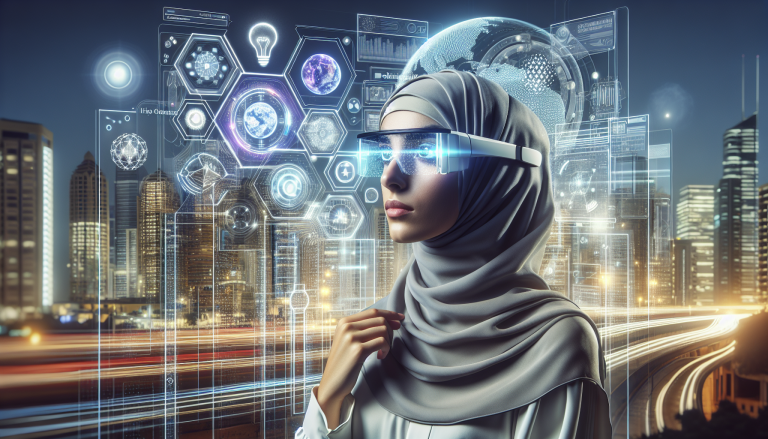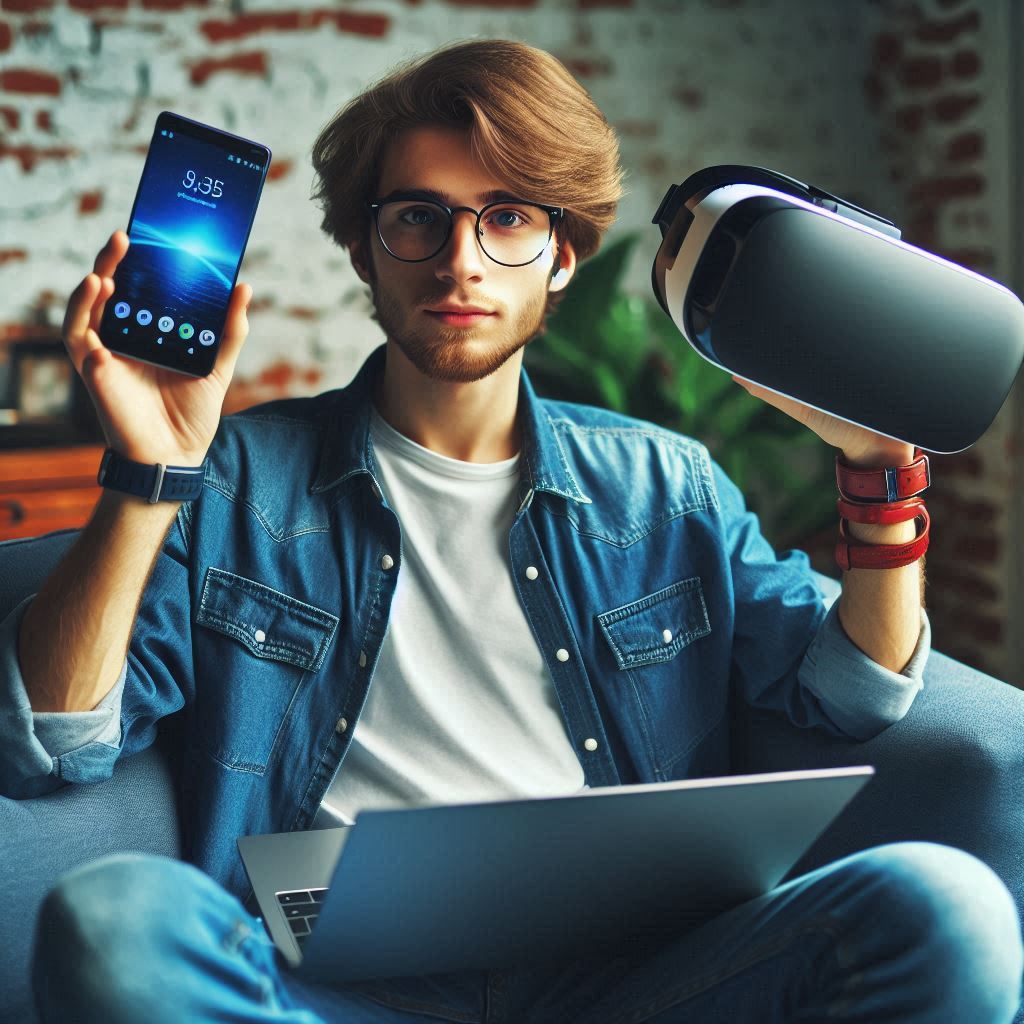Redefining Reality: The Rise of AI-Powered Augmented Reality
The fusion of artificial intelligence (AI) with augmented reality (AR) is shaping one of the most transformative trends in today’s tech landscape. Far beyond the initial novelty of superimposed images, AI-powered AR is now redefining how industries operate, how societies interact, and how individuals perceive the environment around them. This convergence harnesses the strengths of both technologies: AR’s immersive visualization capabilities and AI’s data-driven insights, creating a groundbreaking symbiosis that extends human potential in unprecedented ways.
Unveiling Real-World Applications
The practical applications of AI-enhanced AR span a diverse array of sectors, each illustrating the profound operational and experiential shifts enabled by this innovation. In healthcare, surgeons employ AR headsets integrated with AI algorithms that overlay critical patient data and procedural guidance directly onto the surgical field. This synergy significantly reduces procedural risks and enhances precision. For instance, companies like AccuVein have harnessed AI to create AR visualizations of veins, transforming vein-finding procedures in clinical settings.
Manufacturing and industry are witnessing a revolution as well. AI-driven AR systems provide real-time, context-sensitive assistance to technicians and factory workers by visualizing complex machinery internals and guiding maintenance tasks. Siemens is a pioneer here, using AR goggles with embedded AI to deliver instruction and diagnostics, thereby minimizing downtime and boosting productivity. This not only streamlines workflows but also democratizes specialized skills, enabling less experienced workers to perform complex operations with confidence.

Retail transformation is another domain where this technology excels. AI-enabled AR apps allow customers to virtually “try on” clothes, accessories, or visualize furniture within their own homes before purchase. IKEA, for example, has taken a leap by integrating AI in its AR app to recommend customization options based on user preferences and spatial data, transforming shopping into an interactive and data-informed experience.
On the urban scale, smart city initiatives increasingly deploy AI-infused AR to optimize infrastructure management and public services. Municipal workers equipped with AI-powered AR glasses can instantly access infrastructure blueprints, detect anomalies, and coordinate repairs, enhancing response times and service quality. This blend of technologies facilitates an intelligent overlay on city environments, primed for real-time engagement and decision-making.
Societal and Industrial Impact
The societal implications of AI-powered AR extend well beyond convenience and efficiency. Education stands poised for a quantum leap, where immersive learning is tailored by AI to accommodate diverse learning styles and paces. Imagine history lessons where students walk through virtual ruins reconstructed onto their classroom, guided dynamically by AI narrators adapting content complexity in real-time. This capability democratizes advanced learning tools, enabling accessibility across geographic and socio-economic divides.
Workplace dynamics are also evolving. Remote collaboration benefits immensely from AI-assisted AR environments that foster presence and interaction beyond video calls. Companies like Spatial and Microsoft with its Mesh platform are leading the charge in creating collaborative virtual spaces where AI manages environmental variables and participant interactions, making distributed teams more cohesive and productive.
Boasting industrial automation, robots integrated with AI and AR interfaces enhance human-robot collaboration. Workers and robots share workspace more intuitively as AR systems visualize robot intentions and AI interprets sensory data to adjust behavior dynamically, elevating safety and efficiency standards on factory floors.
Yet, the rise of AI-enhanced AR calls for a nuanced examination of privacy, security, and ethical issues. As AR devices collect vast amounts of real-time environmental, behavioral, and biometric data, AI acts as both a powerful analytic engine and a potential vector for misuse. Stringent data protection protocols and transparent AI decision-making processes must underpin deployments to maintain public trust. The blend of immersive technology and intelligent inference also raises concerns about digital surveillance and the blurring boundaries between reality and virtual augmentation, demanding ongoing societal dialogue and regulatory foresight.
The Pioneers and Innovators
Several key players drive innovation in this vibrant space, continuously pushing the envelope of what AI-powered AR can achieve. Magic Leap, with its advanced spatial computing technology, blends AI detection and AR visualization seamlessly, aiming to revolutionize enterprise applications. Microsoft’s HoloLens 2 embodies a sophisticated union of hardware and AI software that redefines user interaction with mixed reality spaces, especially in industrial contexts.
Startups also inject agility and creativity into the ecosystem. Niantic, originally known for its augmented reality gaming platform Pokémon GO, now ventures into AI-assisted AR mapping and environmental interaction, laying the foundation for next-generation location-based services and entertainment.
Tech giants like Google and Apple amplify this momentum, embedding AI functionalities into their AR toolkits to empower developers, accelerate content creation, and optimize hardware performance. Google’s ARCore and Apple’s ARKit facilitate a burgeoning ecosystem of applications enriched with AI capabilities, ensuring scalability and innovation reach.
Future Trajectory: A Boundless Frontier
The future of AI-powered AR unfolds along a trajectory marked by deeper cognitive integration and expanded real-world applicability. Advances in AI models—particularly in natural language processing, computer vision, and predictive analytics—promise AR environments that not only react to users but anticipate needs and adapt continuously. Imagine smart environments where AR interfaces serve as dynamic assistants, delivering contextual information that molds itself proactively to user intentions.
Simultaneously, hardware evolution is set to shrink form factors while boosting processing power and battery life, enabling more natural and pervasive AR experiences. The advent of 5G and edge computing reduces latency, critical for real-time AI-AR responsiveness, opening doors to applications in autonomous vehicles, telemedicine, and emergency response.
Ethical frameworks and regulatory landscapes will mature, integrating stakeholder input to safeguard human-centric technology evolution. Transparent AI, informed consent, and equitable access will form the triad guiding responsible deployment.
Ultimately, AI-powered augmented reality embodies a synthesis of seeing and understanding—where technology magnifies human cognition by overlaying intelligence directly onto our perception of the world. As this trend matures, it will reshape how we learn, work, and interact, signaling a new epoch in the evolution of tech-driven society. The relentless curiosity of innovators combined with responsible stewardship will determine how far this fascinating frontier expands.


